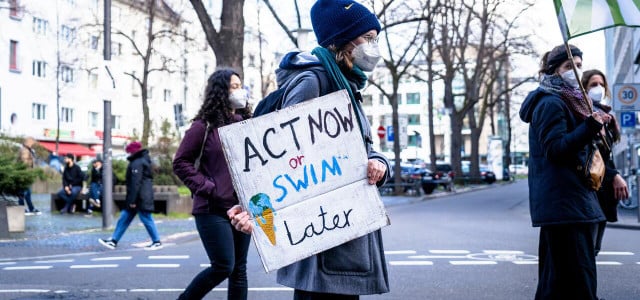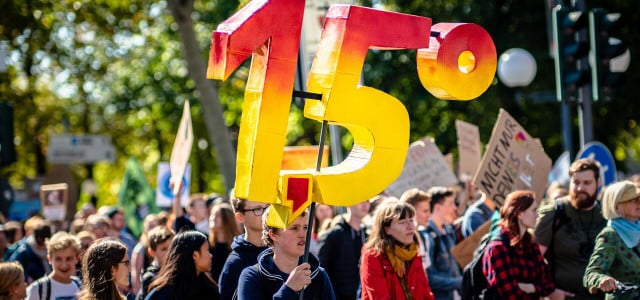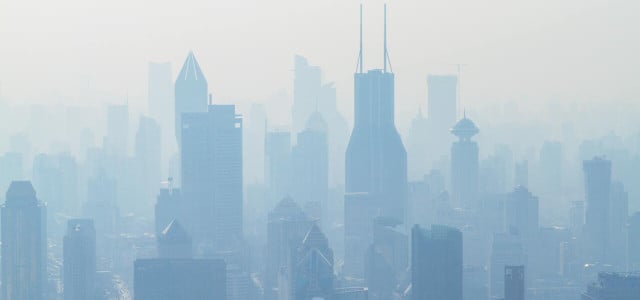Understanding our climate targets is a vital first step to meeting them — and averting the worst impacts of climate change. Let’s take a closer look.
You may have heard of the Paris Climate Agreement and a few other pledges and programmes, but what do they actually mean? And, considering many are years old, how far has the United States gone towards meeting these climate targets?
The answer is not straightforward; however, there is room for hope. We have set clear short- and long-term goals for reducing carbon emissions in the US and fighting climate change. But what are the goals, exactly? We examine how our climate goals stack up against those of other nations and see how far we have to go before reaching them.
Let’s take a look at three of the most recent US climate targets, what they mean and how we’re doing.
What Are We Fighting For?

Before we get into some of the United States’ climate targets and whether it’s likely we’ll reach them, let’s recap why we set these goals in the first place. How high are the stakes?
The climate catastrophe in a nutshell
The world is already 1.1°C (1.9°F) hotter than it was between 1850 and 1900, the pre-industrial era. In the United States and many other places around the world, we are feeling the heat faster than predicted. We’ve seen historic droughts, raging wildfires, unprecedented storms and flooding, all against the backdrop of record heatwaves.
And that’s just in America. Poorer countries, swathes of the Global South as well as new, previously predictable regions are facing new realities of climate change. But this is happening without the resources available to richer countries like the United States.
If we do reach our climate goals, we can safeguard the future of our planet.
If we don’t, we face the most catastrophic consequences of climate change:
- Sea levels rising: Rising sea levels could impact one billion people by 2050.
- Coral bleaching: All of the world’s coral will be wiped out, affecting vital ecosystem biodiversity in ways we don’t yet understand.
- Ice-free Arctic: We will have an ice-free Arctic within just a decade — significantly affecting the number of polar bears left.
- Heat waves: Heat waves will become more frequent and severe around the world, directly affecting billions.
- Flooding: 170 percent more than today if the earth warms just 2°C.
- Wildlife habitats: We’ll lose 18 percent of insects, 16 percent of plants and 8 percent of vertebrates — at the very least.
In 2021 the US enrolled in several pledges, national and international, creating a strategy for tackling climate change. Let’s look at them in more detail.
1. (Re)joined the Paris Agreement



The Paris Climate Agreement, also known as the Paris Climate Accords, took place on the 12th of December 2021. It is a historic international treaty formally agreed upon by 195 signatories (nations and groups such as the European Union), who sought to set out a clear, coherent global strategy for tackling climate change.
The agreement saw all parties agreeing both to contribute individually and work collaboratively to limit global temperature rise to well below 2°C by 2030, 1.5°C being the maximum temperature increase that would allow our planet to avoid the gravest risks, with net zero emissions by 2050.
Recommended reading: Carbon Neutral vs. Net Zero: What’s the Difference?
The Paris Climate Agreement is essentially the only international, legally-binding goal that the US (and almost the entire world) has agreed to follow. The signing into action was an enormous step, as it signaled global recognition of the reality of climate change, although some argue it hasn’t gone far enough. Some US-specific goals that we will go into later were largely established in order to keep the US on track to meeting its contributions to this target.
How achievable is this goal?
As this is a global initiative, the US is not solely responsibility for whether we reach this goal or not. However, the United States emits more CO2 than any other country on Earth — a quarter of all historical emissions. Therefore, the onus is really on the US to make a significant contribution to the goals set out by the Paris Agreement.
And, so far, we’re not pulling our weight. The COVID-19 pandemic resulted in a steep decrease in emissions in 2020, but as the economy recovered, so did our emission rates, which increased by 6 percent in 2021 compared with 2020. COVID or not, we should be aiming to consolidate the drop in emissions caused by the pandemic rather than allowing them to go back to ‘normal.’
As to whether the goal of capping global temperature rises to 1.5°C is likely, the jury is still out. According to a report by the World Meteorological Organization (WMO), it’s more likely than not that average global temperatures will reach 1.5°C above pre-industrial levels within the next five years. Indeed, since the threshold was agreed upon in 2015, our chances of exceeding it have actually risen.
However, it’s important to understand exactly what the Paris Agreement means when it talks about a 1.5°C rise. It is likely that there will be global temperature rises of 1.5°C, but that doesn’t strictly mean that the world has failed in its Paris Climate Agreement commitment. Temperatures may peak above the 1.5°C average and then go back to “normal.” What we want to avoid is a sustained or permanent global temperature rise.
As the UN’s Intergovernmental Panel on Climate Change puts it,
“A single year of exceedance above 1.5°C does not mean we have breached the iconic threshold of the Paris Agreement, but it does reveal that we are edging ever closer to a situation where 1.5°C could be exceeded for an extended period.”
However, there is still a long way to go, and the countdown to 2030 is on. The window for making sufficient reductions to meet our targets is closing quickly, and many are concerned that we are moving in the wrong direction. Fossil fuel emission rates are now above pre-pandemic levels — and according to some estimates, our current efforts to reduce global warming are seven times too low to be in line with the 1.5 °C goal of the Paris Agreement by 2030.
2. Pledged Greenhouse Gas Emission Reduction of 50-52 Percent
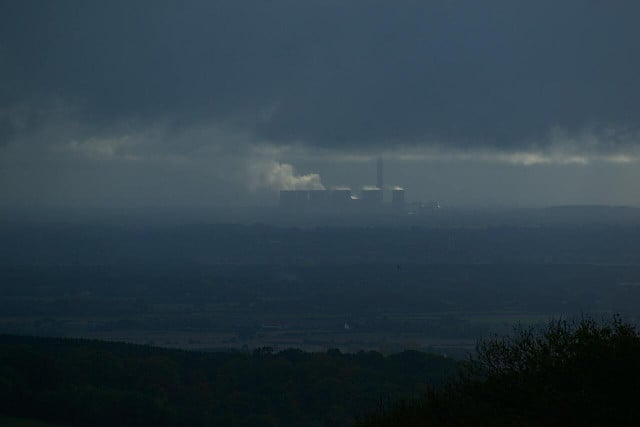


In line with his commitment to rejoin the Paris Agreement, April 2021 saw President Biden announce one of the more stringent near-term targets among wealthy nations. He pledged a Nationally Determined Contribution (NDC) to reduce American greenhouse gas emissions by 50-52 percent below 2005 levels by the year 2030.
While not as ambitious as the climate targets set by the EU (55 percent) and UK (68 percent), Biden’s move distinguished his government’s attitude towards climate change from that of the previous Trump administration. This target was viewed as a positive step, but…
How achievable is this goal?
The Biden administration has faced questions about how realistic its 2030 climate target actually is. Firstly, unlike the targets set by the EU and UK, the US’s greenhouse gas emissions target is not enshrined into law. This means that there is very little (at least legal) accountability or way to hold the government to account if these targets aren’t reached.
Studies looking into the probability of these targets being reached have found that the US would have to slash existing emissions at an unprecedented rate every year, requiring extensive new policies — immediately. These could look like:
- Vastly more wind and solar power installations
- A push for electric cars over traditional models
- Strong-arming oil and gas companies into slashing methane emissions
- Initiatives in California and New York to clean up their power plants and vehicle fleets, as they’ve agreed to do in the past
These are all, theoretically speaking, within the remit of the government. While the window for reaching these ambitious targets is closing quickly, there is currently no legislative or regulatory barrier to achieving significant, maybe even target-reaching, carbon reduction.
However, many remain skeptical. According to Robert Stavins, a professor of Energy and Economic Development at Harvard University quoted in Scientific American, “It is clear the NDC is not going to be achieved… The question is how far off is the administration going to be from what it committed to.”
Recent analysis shows that US emissions are set to fall to 25 percent by 2030 if current policies are followed (and given the short-term nature of the election cycle, there are no guarantees current policies will stay in place). That would leave the US over 25 percent (and up to 2.3 billion metric tons of carbon) short of its goal.
While this may sound like an impossible goal to reach, it is possible to make incredible reductions to greenhouse gas emissions within a short time. 2019 saw US greenhouse gas emissions decrease by nine percent. The UK is already over halfway towards meeting its goals, despite having one of the most ambitious global targets.
3. Launched the Global Methane Pledge
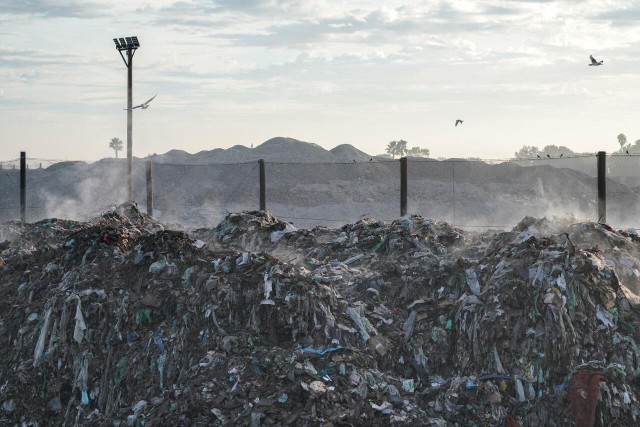


In tandem with the EU, November 2021 saw the US announce its Global Methane Pledge, a global effort to limit methane emissions to 30 percent of its 2020 levels, launched at COP 26 in November 2021 in Glasgow. 122 participating nations and unions agreed to the pledge, which could contribute to a reduction of 0.3°C of warming by 2040.
Methane, although also a naturally-occurring component of natural gas, is a powerful greenhouse gas more than 25 times as dangerous as carbon dioxide when it comes to trapping heat within the Earth’s atmosphere. Therefore, rapidly reducing methane emissions is regarded as the single most effective strategy in the fight against climate change and in keeping the planet’s goal of achieving the Paris Agreement targets.
According to the EU Commission Chief, Ursula von der Leyen, curbing methane emissions is “the lowest hanging fruit,” as most of the curbs necessary to reduce methane emissions can be achieved at little or no cost. Just under half of the methane released into the atmosphere comes from natural sources such as wetlands, however, the majority comes from human activity. Fracking is thought to be a huge contributor to methane emissions, as the extraction, transportation and use of natural gas produces it in enormous quantities. It’s just one of the many human activities that contribute to air pollution.
How achievable is this goal?
This pledge was met with enthusiasm from the scientific community, many of whom considered the focus on carbon dioxide emissions as an oversight.
However, as we’ve seen with previous goals, some complain about the goals not going far enough, and some complain that, as long as significant polluters are not signatories, we will never reach our targets. For example, China, Russia, India and several other emitters that account for around 35 percent of human-caused methane emissions have yet to join the pledge. This ultimately makes the target harder to reach, no matter the soundness of the pledge’s intentions, or enthusiasm of participating nations.
The good news is that quick action on methane can have a big impact on the environment. Methane, though significantly more potent at trapping heat than CO2, lasts in the atmosphere for a much shorter time. Whereas CO2 can last in the atmosphere for centuries, methane will either convert to CO2 or get cycled out of the atmosphere in around a decade. This means that we will see the effects of any efforts to reduce methane in our atmosphere much faster than efforts to reduce CO2, which is a quick boost to our chances of reaching our 1.5°C goal.
As the pledge was only created in 2021, it’s still slightly too soon to see exactly how the US is doing on its methane pledge. However, there are already several steps for tackling methane emissions in the works. The EPA is set to publish updated methane regulations in early 2023, and 2024 will see the IRA will impose a $900 fee per metric ton of methane which will rise to $1,500 in 2026, which will primarily affect larger oil and gas facilities. While this is a good deterrent in theory, these facilities only represent around 40 percent of industries responsible for methane production.
Issues With the Goals
As the New York Times points out, it can be hard to compare the emissions targets from different nations, as both criteria and benchmarks can differ. For example, in the case of the US, Japan and Canada’s commitment to lowering gas emissions to pre-2005 levels, the 2005 benchmark was decided on the basis that this was where fossil fuel emissions peaked in these nations. The EU, by contrast, tends to measure their reductions from 1990, as this timeframe saw falling emissions thanks (in part) to the collapse of the economy in big polluting Eastern European nations.
Another issue is that some claim that reducing gas emissions stifles development. Rich countries and entities like the US, EU and UK have vowed to drastically reduce their emissions within the coming decades. However, these nations account for just a quarter of emissions today (although this percentage was far, far higher in the past). Many lower-income countries, including China and India, are expecting their greenhouse gas emissions to either stagnate or rise over the next decade.
One argument is that countries that follow strict environmental policies are at a production and trade disadvantage compared with countries that choose not to follow them and vice-versa. Think about it — the States is both the biggest economy on earth, as well as the highest CO2 emitter historically. These two things are inextricably linked.
Our reckless use of the earth’s natural resources has undoubtedly made us a rich nation. Now, all of a sudden, we are telling poorer nations that they need to agree to throttle their own development to help solve a problem that they had almost no part in creating.
Another issue with the goals is that many argue they are not ambitious enough. Even 1.5°C of warming is enough to make our weather events more extreme and unpredictable. While the ultimate goal of the Paris Agreement is net zero by 2050, we are likely to see many natural disasters during the years that follow whether we reach the target or not, economic sacrifices and all.
Final Thoughts
Ultimately, the US, as well as much of the rest of the world, has agreed to a set of definable climate targets with the aim of limiting climate disaster. Action is being taken, if more slowly than many watching would like.
Achieving these climate targets is much more complicated than simply asking people to recycle more or buy electric cars. So much human activity results in greenhouse-gas production that it is dizzying for any government to try to make popular, workable policy.
However, try they must. 2030 is just a few years away, and we are still drastically short of reaching our targets. The consequences of not taking bold, decisive action are already being seen. Millions of lives and billions of dollars in economic losses caused by climate disasters are at stake. We are not sure how long it will take before the planet reaches its tipping point of no return, but once we’re passed it, it’s too late to come back.
It’s within the hands of the world’s governments to take action and save our planet, and it’s likely not too late to make a huge impact.
Read more:
- Human-Environment Interaction: Definition & Examples
- The Great Climate Change Hoax? How to Fight Climate Denial
- Take Action: 15 Everyday Ways to Combat Climate Change
- Why Traditional Ecological Knowledge Is Crucial
Do you like this post?






